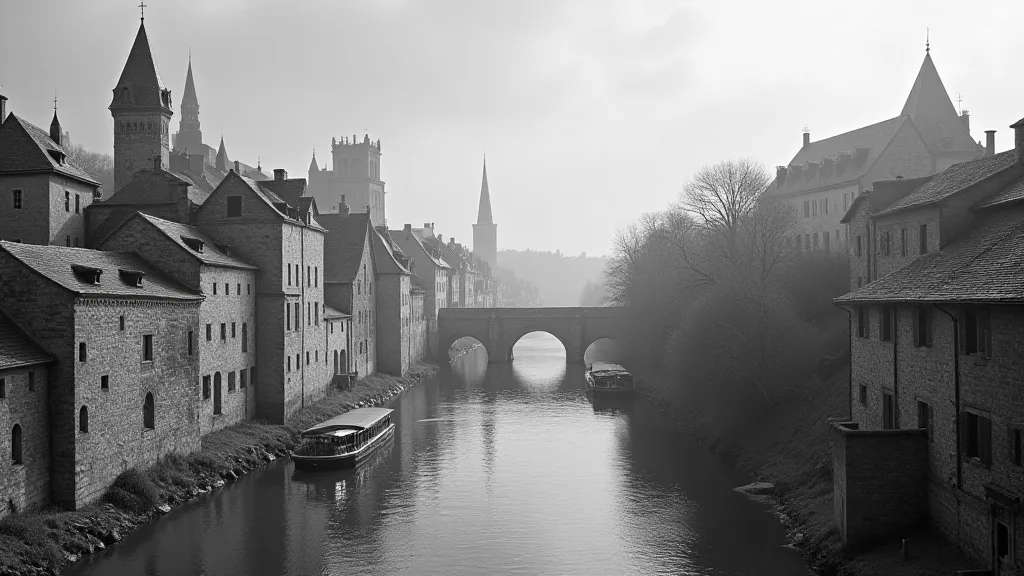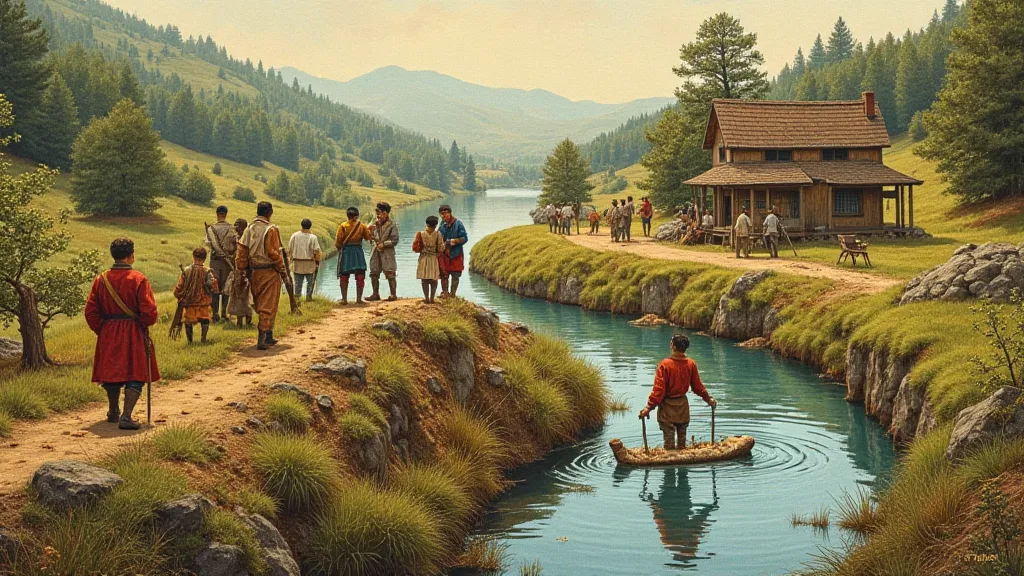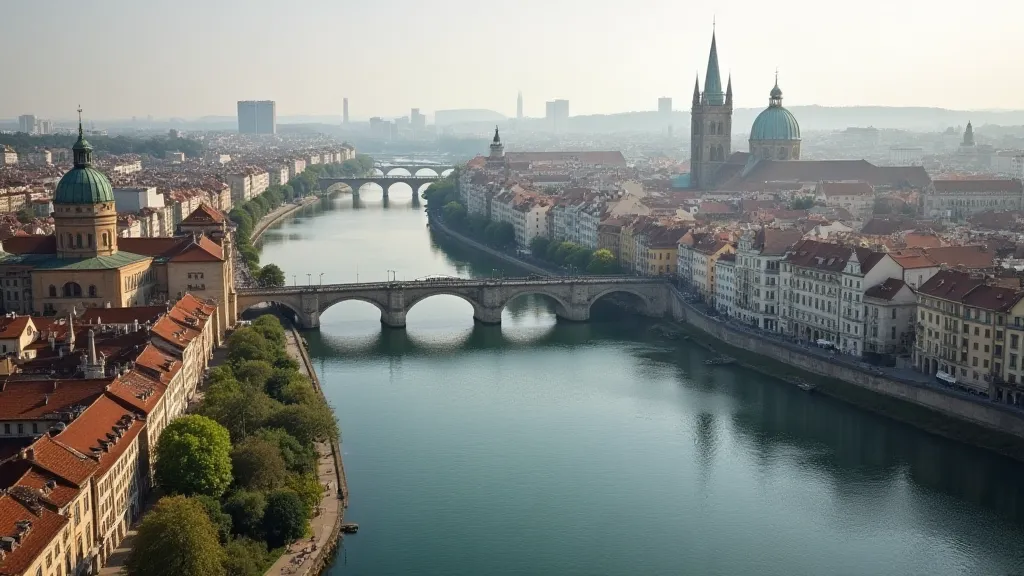The River’s Embrace: How Water Shaped Medieval Urban Planning
Imagine a world without readily available drinking water, without the ease of transporting goods, without the constant hum of industry fueled by a reliable power source. This was the reality of pre-modern Europe. For medieval cities, water wasn’s just a necessity; it was the very foundation upon which they were built, literally and figuratively. The layout of streets, the placement of buildings, even the character of a city's economy – all were profoundly shaped by the embrace of rivers, streams, and canals. It's a story often overlooked, overshadowed by the grandeur of cathedrals and the drama of feudal lords, but crucial to understanding the lived experience of medieval life. The very act of planning a city, understanding its scale and relationship to the landscape, involved a level of meticulousness that resonates with modern architectural planning—something that later became a documented art, a subject that some historians explore through the lens of the cartographer’s dream.

The Lifeblood of a City
Before the advent of widespread well systems and piped water, rivers served as primary sources of drinking water, powering mills, providing transport routes, and facilitating waste disposal. This wasn’t a romanticized ideal; the reality was often murky and unsanitary. Yet, the dependence on rivers dictated urban design in fundamental ways. Cities grew alongrivers, not apart from them. Think of Venice, Amsterdam, Bruges, Lyon, York – each a testament to this river-centric approach. The river wasn’t just a boundary; it was the city's circulatory system. Rivers were integral not only to daily life but also to the overall perception and aesthetic of the urban environment, a concept explored in greater detail when considering forgotten skylines.
Consider the placement of marketplaces. Frequently, they clustered along the riverbanks. Merchants from distant lands would arrive by boat, bringing goods that were then traded directly to the city's inhabitants. The ease of unloading and distributing these goods was paramount. Likewise, mills, the engines of medieval industry, were invariably located on stretches of river with strong currents. The rhythmic clatter of millstones grinding grain became the soundtrack of daily life, a constant reminder of the river’s power. The development of these structures, the careful construction of buildings robust enough to withstand the forces of nature and the demands of commerce, speaks to the ingenuity of medieval builders. The preservation of these historical remnants and the careful reconstruction of what has been lost, often reveals an artistic beauty that echoes the creation of the frozen symphony.
Defensive Advantages and Urban Layout
The river’s influence extended beyond practical considerations; it played a vital role in defense. A river acting as a natural barrier could significantly reduce the need for expensive and labor-intensive fortifications. Cities like Dordrecht in the Netherlands, encircled by water on three sides, owe their early prosperity and security to this strategic advantage. The river, however, also presented vulnerabilities. Flooding was a constant threat, and access to the river could be exploited by invaders. Consequently, defensive structures were often integrated into the riverbank – fortified walls, towers, and drawbridges controlled access and protected the city's vital waterway. The intricate details of these constructions and the knowledge required to build them are a testament to the ingenuity of medieval engineers and builders, a quality sometimes captured in the pursuit of the craftsmanship’s vanishing legacy.
The layout of medieval streets often reflected the river's influence. Many cities featured a "gridiron" pattern of streets, radiating outwards from the riverfront. This design facilitated movement of goods and people, allowing for efficient distribution throughout the city. However, in older settlements, the street layout often became more organic, winding around natural features and conforming to the topography of the riverbank. These irregular patterns, while charming to modern eyes, often posed challenges for urban planning and sanitation. The planning of cities meant not only considering the practical concerns of daily life, but also the aesthetic value of the landscape, the play of light and shadow, an ambition reflected in the creation of
The Rise of Canals and Waterways
As populations grew and trade flourished, the limitations of natural waterways became apparent. Medieval engineers, often working in conjunction with monastic orders known for their ingenuity, began to construct canals to extend the reach of navigable waters. These canals connected rivers, bypassed obstacles, and opened up new regions for trade and settlement. The construction of canals was a monumental undertaking, requiring vast amounts of labor and engineering expertise. The ambition to reimagine the landscape, to manipulate water to serve human need, hints at a desire for more than just functionality; it suggests a future of altered skylines and structures that defy the ordinary. Often, the ambition was coupled with meticulous planning, a process sometimes viewed as a pursuit of

Building Designs Reflecting the Water’s Presence
The proximity to water didn’t just dictate the layout of cities; it also impacted the design of buildings. Houses built directly on the riverbank often featured jetties or overhanging structures, allowing for easy access to boats. Warehouses and storage facilities were invariably located near the water’s edge, facilitating the loading and unloading of goods. The lower levels of buildings were often used for commercial purposes, while the upper floors were reserved for residential use. The ground floor was essentially a waterfront, a bustling hub of activity. These waterfront buildings, often constructed of timber and stone, were a vibrant and essential part of medieval urban life. The careful arrangement of windows to maximize natural light, the strategic placement of structures to benefit from breezes, and the incorporation of decorative elements to enhance visual appeal all contribute to a sense of harmony and beauty.
Even the construction materials were often influenced by the river. Stone quarried from nearby riverbeds was commonly used for building walls and foundations. Timber, readily available from riverside forests, was utilized for roofing and framing. The river, in essence, supplied not only the transport routes but also the raw materials for construction. The skill of the builders, their ability to select the perfect materials for the task, and the longevity of what they accomplished stands as a lasting tribute to the value of experience and craftsmanship, a perspective that sometimes finds echoes in the documentation of
A Legacy in Modern Landscapes
While the medieval era has long passed, the influence of rivers on urban planning remains visible today. Many modern cities have inherited the river-centric layout of their medieval predecessors. The historic waterfronts of cities like York, Bruges, and Amsterdam offer a tangible connection to the past, allowing us to appreciate the ingenuity and resourcefulness of medieval urban planners. Walking along these historic riverbanks, one can almost hear the echoes of medieval life – the creaking of boats, the shouts of merchants, the rhythmic clatter of millstones – a constant reminder of the river’s enduring embrace. The skill and artistry involved in the creation of these urban landscapes, their ability to blend the natural environment with human needs, continues to inspire architects and designers, a commitment to understanding the natural world and how we interact with it.
Thinking about it, the entire human experience has been shaped by water. Its power, its unpredictability, and its potential for both sustenance and destruction have molded civilizations across the globe. The medieval cities, with their river-centric layouts and building designs, provide a particularly compelling example of this profound relationship. They serve as a reminder that we are, and always will be, inextricably linked to the natural world. Considering the enduring legacy of these medieval urban designs, it’s no surprise that we continue to strive for beauty and functionality in our own creations, a process shaped by the careful consideration of our natural environment.






